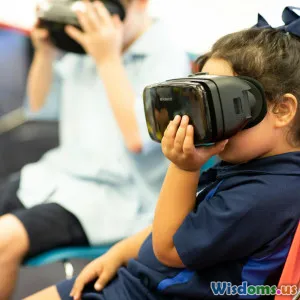
Why Active Listening Is Vital for Effective Communication
10 min read Explore why active listening is crucial for effective communication and learn practical tips to enhance your conversational skills. (0 Reviews)
Why Active Listening Is Vital for Effective Communication
Communication is more than just exchanging words; it’s about understanding and being understood. Yet, many people fail to communicate effectively not because they don’t speak well, but because they don’t listen well. Active listening, a conscious effort to hear, understand, and respond meaningfully, is a cornerstone of effective communication. This article delves into why active listening is vital, supported by examples, research, and practical tips to help you become a better communicator.
Introduction: The Lost Art of Listening
In a world overloaded with messages, emails, calls, and face-to-face chatter, true listening has become scarce. According to a survey by the International Listening Association, people spend 45% of their communication time listening but retain only about 25-50% of what they hear. This gap highlights a fundamental problem: hearing is passive; listening is active.
Renowned author Stephen R. Covey once said, “Most people do not listen with the intent to understand; they listen with the intent to reply.” This mindset leads to misunderstandings, conflicts, and missed opportunities.
Active listening turns this around by emphasizing understanding before responding. It's a skill that enhances relationships, prevents costly errors, and builds trust. But why exactly is it so vital? Let’s explore.
Understanding Active Listening
What Is Active Listening?
Active listening is a communication technique that requires the listener to fully focus, understand, respond, and then remember what is being said. It involves more than just letting words fall on your ears.
Key components include:
- Paying full attention without distraction
- Showing verbal and non-verbal feedback
- Reflecting or paraphrasing to confirm understanding
- Withholding judgment while listening
- Responding appropriately and empathetically
Active vs. Passive Listening
Passive listening means simply hearing the words, often zoning out or waiting for your turn to speak. In contrast, active listening demands a mental commitment to the speaker and message.
Example: When a colleague shares a concern, a passive listener might nod without engagement, while an active listener would ask clarifying questions or rephrase the concern to ensure understanding.
The Critical Importance of Active Listening
1. Fosters Deeper Understanding
Active listening helps you fully comprehend not just the words but the emotions and intent behind them. This deep understanding facilitates better decision-making and reduces misunderstandings.
For instance, in customer service, responding solely based on what’s said may miss emotional cues indicating dissatisfaction or urgency. Active listening allows representatives to address deeper concerns, improving customer satisfaction.
2. Builds Trust and Strengthens Relationships
When people feel genuinely heard, rapport and trust grow. Dr. Ralph Nichols, the pioneer of listening research, stated that good listeners quickly earn trust.
In personal relationships, taking time to listen attentively shows respect and care. In professional settings, leaders who practice active listening are perceived as more empathetic and trustworthy, which boosts teamwork.
3. Prevents Miscommunication and Conflict
Misunderstandings are a common cause of conflicts. Active listening reduces this risk by clarifying messages and assumptions.
A study in the Journal of Occupational and Organizational Psychology noted that employees who engaged in active listening during conflict resolution reported higher satisfaction and better outcomes.
4. Enhances Learning and Retention
By engaging actively, listeners retain more accurate information. Active listening is especially vital in education and training, enabling better comprehension and application of knowledge.
5. Encourages Open, Honest Dialogue
Active listening creates a safe space for people to express themselves without fear of quick judgment, promoting transparent communication essential in leadership and counseling.
Real-World Applications and Examples
Workplace Communication
Effective teamwork hinges on communication. Consider Google’s Project Aristotle, which found psychological safety—often enabled by attentive listening—as critical to successful teams.
Managers who practice active listening can uncover underlying issues, address employee concerns promptly, and foster innovation.
Healthcare
In medical contexts, patient outcomes improve dramatically when clinicians listen actively. Studies show patients who feel heard are more likely to follow treatment plans and report satisfaction.
Conflict Resolution
Negotiators manage competing interests by listening carefully to all parties. Active listening helps identify common ground, diffusing tension.
Personal Growth
By listening actively in daily interactions, you gain new perspectives, broaden understanding, and enhance emotional intelligence.
How to Develop Active Listening Skills
1. Eliminate Distractions
Put away phones, turn off notifications, and maintain eye contact. This demonstrates focus and creates an environment conducive to listening.
2. Be Present
Train your mind to stay in the moment. Mindfulness exercises can enhance present awareness, reducing the urge to multitask.
3. Use Body Language
Nod occasionally, maintain open posture, and lean slightly forward to show you’re engaged.
4. Avoid Interrupting
Let speakers finish their thoughts before responding. Interruptions break flow and may imply your input matters more.
5. Reflect and Paraphrase
Summarize what you heard: “So what you’re saying is…” This confirms understanding and encourages speakers to clarify if necessary.
6. Ask Open-Ended Questions
Encourage elaboration with questions like, “Can you tell me more about that?” or “How did you feel when…?”
7. Manage Your Responses
Reserve judgment and emotionally charged reactions until the speaker has finished.
8. Practice Empathy
Try to see things from the speaker’s viewpoint, which fosters compassionate and effective responses.
Overcoming Common Barriers to Active Listening
Prejudgments and Biases
We tend to filter messages through personal biases. Awareness and self-reflection help correct this.
Internal Noise
Distractions such as stress or fatigue impair listening. Addressing these is vital for effective engagement.
Multitasking
Modern culture glorifies multitasking, but studies (e.g., Stanford University) show it reduces attention and memory retention.
Emotional Triggers
Emotions can cloud judgment. Recognizing triggers helps maintain composure.
Lack of Training
Listening is a skill, not an innate talent. Formal training or courses can improve performance.
The Transformational Power of Active Listening
To quote Epictetus, “We have two ears and one mouth so that we can listen twice as much as we speak.” Transforming your listening skills can change how you relate to others and solve problems.
Employers like Zappos emphasize listening as a core company value, linking it directly to customer loyalty and employee satisfaction.
As individuals, prioritizing active listening leads to richer relationships, fewer misunderstandings, and more effective leadership.
Conclusion: Take Action Towards Better Communication
Active listening is no mere courtesy; it is an essential communication tool that strengthens connections and fosters mutual understanding. In every conversation lies an opportunity to practice this skill. Whether you’re engaging with friends, colleagues, or strangers, active listening transforms communication from transactional exchanges into meaningful dialogues.
Start today by implementing simple steps: give your full attention, suspend judgment, and respond thoughtfully. Over time, the benefits will ripple across your personal and professional life.
Remember, communication is a two-way street, and effective listening is the bridge that connects minds and hearts.
References
- Nichols, R.G., & Stevens, C. (1957). Listening to People. McGraw-Hill.
- International Listening Association: Listening Habits Survey.
- Project Aristotle, Google.
- Journal of Occupational and Organizational Psychology: Active listening in conflict resolution study.
- Stanford University Multitasking research.
Interested readers might visit the International Listening Association or take online active listening courses to deepen their mastery.
Master the art of listening, master the art of communication.
Rate the Post
User Reviews
Popular Posts





















